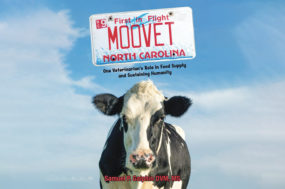Providing adequate energy is a fine balancing act in an ever-changing rumen environment. Low levels may not provide the necessary energy to support high production while excessive energy can result in serious health conditions like rumen acidosis, lameness and liver abscesses.
The solution is finding the right balance and pushing your herd to perform to its potential while keeping your cows, and their rumen, healthy.
When the ration goes awry
Usually the first problem to surface when energy is out of balance is rumen disorders, says University of Florida professor and dairy extension veterinarian Dr. J.K. Shearer. Most of the problems arise, he adds, when the ration has excessive levels of energy, which today is most often from fermentable carbohydrates, such as corn and corn byproducts. Inadequate levels of effective fiber, like long-stemmed hay and/or haylages, also can cause rumen disorders. This is most frequently seen in fresh cows that are not ready for a sudden change from a forage-based dry cow diet to a concentrate-based lactating diet.
Rumen acidosis often results from diets that have too much energy. Since high-energy feeds pass through the rumen quickly, microbes don’t have time to work, which decreases rumination and rumen buffering, which are necessary to keeping rumen pH near neutral.
When pH drops to 5.5 or lower, cows suffer from subclinical acidosis. You may see lowered dry matter intake (DMI) or depressed fat tests, warns Shearer, but acidosis can also lead to larger problems, like lameness, liver abscesses and abomasal disorders. Such problems hurt cow performance and health and, ultimately, profitability.
Start with the basics
Many of the basic nutrients in the ration have the greatest impact on energy balance and rumen health. To prevent acidosis, you must provide the right balance of all of the right nutrients. Although it can sound complicated, Shearer recommends working with your nutritionist to build the proper ration while following a few key guidelines:
• Carbohydrates. Carbohydrates are most used for daily maintenance and production because they are a readily available source of energy. Ration energy should be between 0.72 and 0.78 Mcal per pound. As you creep towards the upper limit, sore feet and lameness can ensue. Be aware of the symptoms so energy can be backed down if necessary. Plus, with today’s feed costs, it’s important not to overfeed carbohydrates.
If fermentable carbohydrate levels get too high, you may need to find an alternative energy source that still promotes optimal rumen health. One option is feeding a quality rumen bypass fat to provide necessary energy without adding more acid to the rumen environment.
• Fiber. Long-stemmed fiber and/or haylages with digestible neutral detergent fiber (NDF) stimulate rumen microbes for optimal health and productivity, while also serving as a rumen buffer. The main drawback to fiber is it usually doesn’t provide high enough energy to be fed as the sole feed source on a high-producing dairy. High-quality fiber ranges between an acid detergent fiber (ADF) value from 19 to 24 percent and NDF value between 25 and 32 percent. Variation in fiber quality is important to monitor and adjust as necessary.
• Protein. Excessive protein can hurt cow performance and in some studies has been shown to have a direct impact on lameness. Keep protein levels in the range of 15 to 18 percent to meet cow needs and promote high production. And, like carbohydrates, protein sources are very expensive and should be tracked closely.
Once the basics are achieved
With the ration base set, now is the time to add high-quality, research-proven feed ingredients to help cows, and their rumen bugs, perform to their potential.
As Shearer noted, rumen disorders caused by diets too high in energy often occur in early lactation when cows are not accustomed to an energy-dense ration. To avoid such problems once cows join the milking string, it’s critical that the rumen bugs are prepped for the upcoming lactation.
Focus on the prefresh diet to prevent rumen acidosis and prepare rumen microbes for the challenging lactation ahead.
Once cows join the milking string, it’s just as important to keep rumen microbes healthy and functioning, especially as cows continue to consume high-energy diets.
Ration preparation
Another important factor in keeping rumen microbes healthy is proper feed preparation and delivery. The right ration can be formulated, but if it’s not mixed and fed properly, cows could consume a ration that mimics a diet too high in energy. Shearer advocates the following to ensure the ration on paper reaches the feedbunk:
• Mixing. If the ration stays in the mixer too long, feed particles will be too short and pass through the rumen too fast. The TMR should be mixed so cows will eat one ration, rather than individual feeds.
If the ration is not mixed properly, you may also see cows sorting the ration, which is when cows only eat certain feeds rather than the complete ration. Rumen problems often result from this eating pattern because cows most frequently choose to eat feeds higher in energy without the necessary fiber for rumen microbes. Ensure the ration is mixed well so cows consume the whole ration, rather than the goodies high in energy. Work with your nutritionist to determine optimal particle length and mixing time for complete ration consistency.
• Feedbunk management. Push feed up at the bunk several times throughout the day to encourage high DMI, which will ensure refusals are minimized and cows receive the nutrients necessary for high production. Protect feed from the outside environment, including sun and rain, by covering with necessary shades or roof tops. This will maintain feed integrity and prevent rumen health issues spurred by poor- quality feed.
As you begin to find the perfect energy balance in the ration, remember to avoid tipping the scale too far one way or the other. Take the time to ensure your cows are getting the best formulated ration for your situation. PD
References omitted but are available upon request at editor@progressivedairy.com
Elliot Block for Progressive Dairyman






